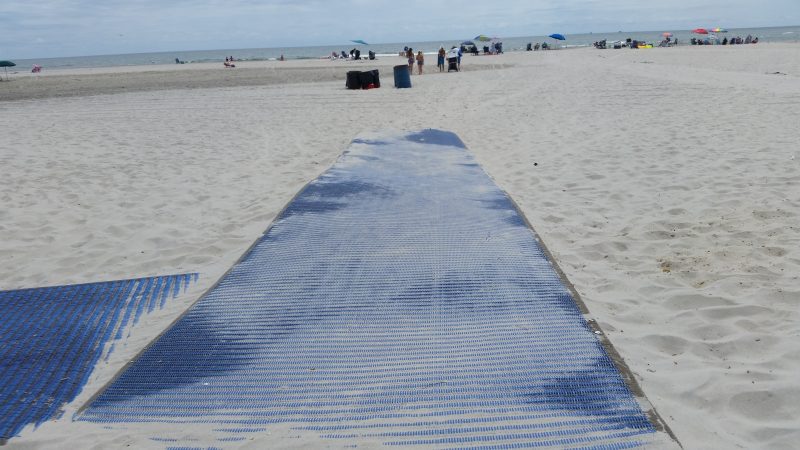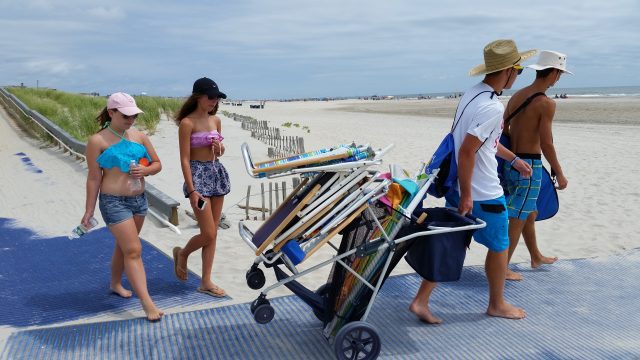By Donald Wittkowski
Sea Isle City’s $40 million beach replenishment project two years ago beautified the shoreline with nearly 3 million cubic yards of pristine new sand.
Although the project created wider and prettier beaches, it also had the unintended consequence of making it more difficult for sunbathers to trudge through the thick, powdery sand.
After listening to complaints from local residents about the deep sand, city officials are planning to improve access to the beaches by adding more handicap-accessible walkways known as “Mobi-Mats.”
“It’s important for all residents, whether you’re young, old or disabled, to be able to walk through the soft sands,” City Council President Mary Tighe said.
Tighe noted there are plans to place new Mobi-Mats on beaches at about every three blocks between approximately 20th Street and 80th Street. The exact number and the locations still must be determined.
Funding for the new Mobi-Mats will be part of the city’s capital plan that Council is expected to discuss at its Dec. 26 meeting, Tighe said.
Sea Isle already has Mobi-Mats on its handicap-accessible beaches at 32nd Street, 40th Street, John F. Kennedy Boulevard, 44th Street, 63rd Street and 85th Street. The mats will remain on those beaches, Tighe said.

The city once had more Mobi-Mats on the beaches, but cut back on the number once the replenishment project was finished. The bigger dunes created by the beach project “negated the need” for so many of the mats, city spokeswoman Katherine Custer said.
Ever since the replenishment project was completed, Sea Isle has concentrated on maintaining the gravel pathways that cross over the dunes to provide easy access to the beaches, Custer explained.
However, complaints have continued from local residents about the difficulties of walking through the deep sand, especially for senior citizens and disabled people. Tighe pointed out that her 75-year-old mother, Marie Tighe, is among the local senior citizens who want better beach access.
“As we expanded the beaches and they became wider, it made it harder for the older people to get through the soft sand to the harder sand,” Tighe said.
The city’s new capital plan will allow Sea Isle to buy and install more Mobi-Mats in time for the 2018 summer beach season. Tighe said each mat will be about 60 feet long, providing an easier transition from the gravel pathways to the sandy beaches.
Mobi-Mats, short for mobility mats, are hard, non-slip portable walkways that lie on top of the sand. They are especially convenient for people who are elderly, have disabilities or use wheelchairs.
Colored a distinctive sky blue, the mats are impossible to miss. At Sea Isle’s six handicap-accessible beaches, the Mobi-Mats average 70 feet long, making it easier for people to traverse the soft sand.
Custer said it costs $2,700 for a 30-foot stretch of Mobi-Mat. With Sea Isle’s mats averaging 70 feet in length on the handicap-accessible beaches, that means it costs around $6,300 for each walkway.
Overall, Sea Isle’s beachfront is 4.5 miles long, stretching from First Street to 94th Street. Tighe said it would be simply too hard for the city’s Public Works Department to maintain so many Mobi-Mats if Sea Isle put them on every beach between First and 94th streets.








